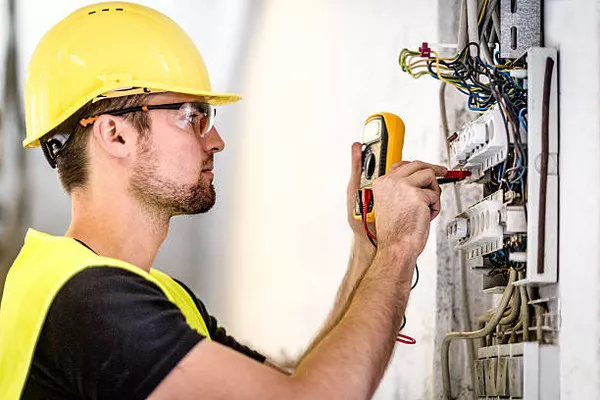Step-down transformers play a crucial role in various electrical systems, enabling the efficient distribution of electricity across different voltage levels. Their importance extends across diverse industries, from power generation and distribution to consumer electronics and industrial machinery. Understanding where step-down transformers are used and their applications underscores their significance in modern infrastructure.
Understanding Step-Down Transformers
Before delving into their applications, it’s essential to grasp the fundamental function of step-down transformers. These devices facilitate the conversion of high-voltage, low-current electricity into low-voltage, high-current electricity. This transformation is crucial for safe and efficient power distribution, especially in situations where lower voltages are required for specific applications or devices.
A step-down transformer consists of primary and secondary coils wound around a ferromagnetic core. The primary coil receives high-voltage electricity, while the secondary coil delivers lower voltage electricity. The ratio of turns between the primary and secondary coils determines the voltage transformation ratio. For instance, a transformer with a turns ratio of 10:1 will reduce the voltage by a factor of 10.
Applications of Step-Down Transformers
Power Distribution:
Step-down transformers are extensively used in power distribution networks to reduce high-voltage electricity transmitted over long distances to lower voltages suitable for residential, commercial, and industrial use. High-voltage transmission lines carry electricity from power plants to substations, where step-down transformers reduce the voltage to levels suitable for local distribution.
Residential Applications:
In residential settings, step-down transformers are commonly employed to reduce the voltage supplied by the main power grid to levels suitable for household appliances and electronic devices. These transformers ensure that electrical appliances operate safely within their designated voltage range, reducing the risk of damage or malfunction.
Industrial Machinery:
Industrial facilities often require specialized machinery that operates at lower voltages than those supplied by the main power grid. Step-down transformers enable the adaptation of high-voltage power sources to meet the requirements of various industrial equipment, such as motors, pumps, and control systems.
Voltage Regulation:
Step-down transformers are used in voltage regulation systems to maintain stable voltage levels within specified tolerances. By adjusting the turns ratio or employing tap-changing mechanisms, transformers can compensate for fluctuations in input voltage, ensuring consistent output voltage levels.
Renewable Energy Integration:
With the increasing adoption of renewable energy sources such as solar and wind power, step-down transformers play a crucial role in integrating these sources into the existing power grid. They facilitate the conversion of variable voltages generated by renewable energy systems into levels compatible with grid infrastructure.
Electronic Devices:
Step-down transformers are integral components of many electronic devices, particularly those designed for international markets where different countries use varying voltage standards. Devices such as laptop chargers, mobile phone chargers, and audiovisual equipment often incorporate built-in step-down transformers to adapt to different voltage requirements.
Advantages of Step-Down Transformers
Voltage Transformation:
The primary advantage of step-down transformers is their ability to efficiently convert high-voltage electricity into lower voltages, making it suitable for a wide range of applications. This transformation enables the safe and effective use of electrical devices and equipment across different voltage levels.
Power Efficiency:
Step-down transformers exhibit high levels of efficiency, minimizing energy losses during the voltage conversion process. Modern transformer designs incorporate advanced materials and insulation techniques to optimize efficiency and reduce waste heat generation.
Voltage Regulation:
Step-down transformers contribute to voltage regulation within electrical systems, ensuring that connected devices receive stable and consistent voltage levels. This regulation is essential for maintaining the performance and reliability of electrical equipment, particularly in sensitive applications.
Safety:
By reducing voltage levels to safer ranges, step-down transformers enhance electrical safety in both residential and industrial settings. Lower voltages decrease the risk of electrical shocks and equipment damage, safeguarding personnel and property.
Compatibility:
Step-down transformers enable the use of electrical equipment designed for specific voltage standards in regions with different electrical systems. This compatibility facilitates international trade and simplifies the deployment of electrical devices across diverse geographic locations.
Scalability:
Step-down transformers are available in various sizes and configurations, allowing for scalability to meet specific voltage conversion requirements. Whether used in small household appliances or large industrial machinery, transformers can be tailored to suit the needs of different applications.
Conclusion
Step-down transformers play a vital role in modern electrical systems, facilitating the safe and efficient distribution of electricity across diverse voltage levels. From power distribution networks and industrial machinery to residential appliances and electronic devices, their applications span across various sectors. The advantages of step-down transformers, including voltage transformation, power efficiency, and safety, underscore their importance in ensuring reliable and sustainable electrical infrastructure. As technology continues to evolve, the versatility and effectiveness of step-down transformers will remain indispensable in meeting the growing demand for electricity worldwide.

